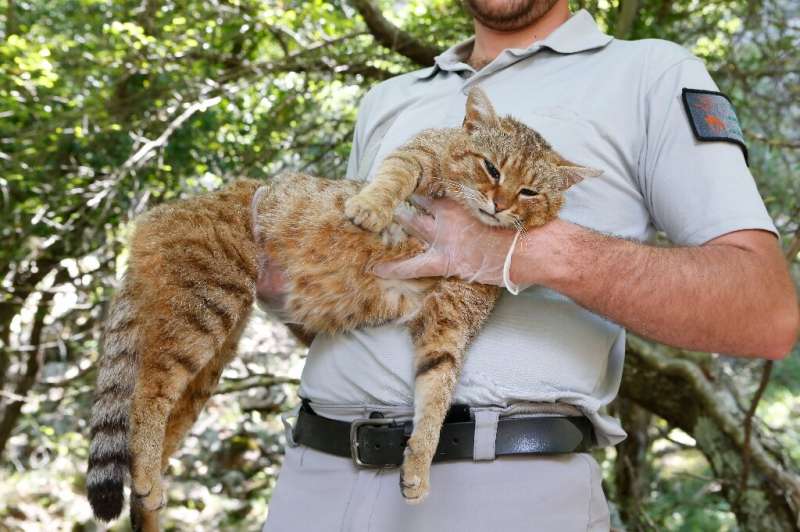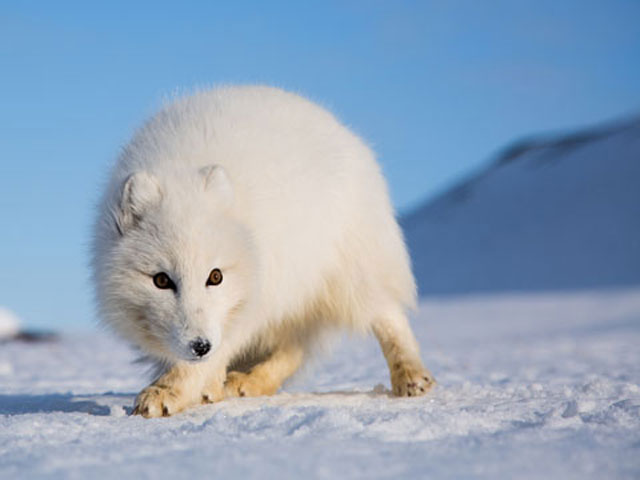This is an update of sorts. I was asked if I had managed to sort out the Sarrazin fox mystery. Were they Old Western Fox types or were they the first old type of North American fox shipped to Europe? Either way they are significant -historically to France in either case but to those interested in wild canid history -definitely.
I sent email and a letter request to the Natural History Museum Paris outlining everything. I even had two emails translated to French so that there was no doubt about why I was contacting them.
Nothing other than a link to their online catalogue which tells you nothing and it just seemed to be a case of the Museum having no interest in even discussing the taxidermies and their history.
Please do not get me wrong because I have had similar disinterest from German museums. Silence might bv seen as far better than being extremely insulted by some sit-on-his-ass alleged 'expert' at a Swiss museum. A museum in the Netherlands was the only one to cooperate and actually came up with an 1843 taxidermy from England.
Museums tend to be run by younger people who have no interest in history or anything else other than to make their institutions look good and draw in money -items of historical significance to their country.... "meh"
As I always end these posts with a "if anyone in France can actually look into this please get in touch" I'll do that here.
__________________________________________________________________
Michel Sarrazin (5th September 1659 – 8th September 1734), was an early Canadian surgeon, physician, scientist and naturalist. Born in Nuits-sous-Beaune in the province of Burgundy, he immigrated at age 25 to the colony of New France as a surgeon. He remained in the colony for the rest of his life, returning to France only during two brief periods. While in New France, his medical skills were constantly in demand, and he quickly rose in the ranks, becoming one of the colonial elite.
Note that this painting is usually thought to be of Michel Sarrazin, however there is some debate as to whether or not this is true.
Sarrazin was both a seigneur and a member of the Conseil Superieur, and held considerable influence in the colony. He had a great interest in botany, and kept up a frequent correspondence with the Académie Royale des Sciences in France, sending fellow scientists numerous specimens of North American plants, as well as detailed descriptions of dissections of animals.
Sarrazin developed a vast knowledge of both the cultural and natural world of New France, and is credited being one of the first scientists to systematically catalogue ecosystems and samples found in New France, resulting in many important botanical discoveries.
Sarrazin received some medical training in France before he was appointed as surgeon to the King’s troops in the colony of New France in 1685.[1] This position required him to minister to both soldiers and town inhabitants. He was quickly noticed for his medical skill, and within a year was promoted to Surgeon Major, becoming the first person to hold this position in the colony.
As Surgeon Major, Sarrazin travelled extensively with troops on expeditions to provide them with medical care. When he wasn't with the troops, Sarrazin was kept busy travelling between the Hotels-dieu of Québec and Montreal, essentially treating the "civilian population of the entire colony".
By 1694, however, he decided to return to France to continue his studies in medicine. He was encouraged to return quickly by colonial authorities including Indendant Bochart de Champigny, who recognized the value and necessity of having a skilled doctor in the colony.
Back in France, Sarrazin spent three years studying in both Paris and Reims, where he received his doctorate of medicine. During his time in Paris, he spent time at the Jardin des Plantes, where he met and studied under Joseph Pitton de Tournefort, who introduced him to botany and "stimulated a lifelong interest in collecting and classifying". Sarrazin would later become a "correspondant" to Tournefort, and their relationship provided Sarrazin with an important link to the Académie Royale des Sciences.
Work with the Académie Royale des Sciences
As a correspondent of the Académie Royale des Sciences, Sarrazin consistently sent samples back to Paris, with no expectation of recognition. New France's uncharted lands proved challenging to botanists, as Sarrazin stated in his correspondence, "I could cross all of Europe more easily, and with less danger, than I could cross 100 leagues in Canada". : One of Sarrazin's Paris correspondents, Sebastien Vaillant, compiled the documents and specimens sent to New France from Sarrazin into a book published in 1708 titled "Histoires des plantes de Canada". This was the first French botanical text of this nature studying North American flora and fauna.
However, Sarrazin's work remained largely unpublished. His only publication by the Académie Royale des Sciences discussed the syrup extraction process of Canadian maple trees, which can be found in "Observations botaniques." Moreover, Sarrazin printed his observations on the fauna of New France as well, notably describing the beaver, the muskrat, the porcupine, the harbour seal, and the wolverine. Therefore, Sarrazin allowed the people of France to acquire more extensive and diverse knowledge on the flora and fauna of New France.
Sarrazin was also a surgeon, and although he was not permitted to diagnose illnesses or prescribe medication, he was adept at healing fractures, bandaging wounds, draining abscesses and bleeding patients. Sarrazin was the only certified surgeon present during a smallpox epidemic aboard a ship anchored in Québec, the Diligente, and thus was in charge of medical procedure surrounding the ordeal. While there was no treatment for smallpox, Sarrazin was successful in preventing the spread of disease and in alleviating the pain of his patients by administering cold baths for the fever and powder for the sores.
Sarrazin's specimens can now be found in the Muséum National d'Histoire Naturelle, in Paris; including a specimen of Sarracenia purpurea.
Maison Michel-Sarrazin
The Maison Michel-Sarrazin is a private palliative care, non-profit hospital. The House opened its doors in 1985 and since then has treated over 7,000 patients.[7] In 2010, the House celebrated its 25th anniversary.
Le Prix Michel Sarrazin
The Michel Sarrazin Award recognizes the scientific career and outstanding contribution of an experienced Québécois scientist. It is awarded annually to a scientist who, through innovation and productivity, has contributed in vital ways to the advancement of biomedical research.
Sarrazin was a notable historical personality with many achievements to his name including the first mastectomy in North America (on 29th May, 1700, at the Hotel-Dieu of Québec). Amongst specimens sent back to France, as noted, were New World animals and these included two foxes -the first from the Americas to Europe.
My colleague, LM, has made a number of observations as well as taxidermy finds of historical value from the UK. LM contacted me one day about a name printed on the botton of a taxidermy piece.
Inscription "Sarrazin", "Naturaliste" and "Fontenay-le-Comte" where there was a small private museum at one time owned by Mathurin Jacques Brisson 30th April 1723 – 23rd June 1806) a noted French zoologist and natural philosopher resided at Fontenay in 1783 so the connection seems solid.
Mathurin Jacques Brisson
On checking the only conclusion that could be drawn was that this was one of the Sarrazin foxes. That made it an important piece in french natural history. The specimen is shown below.Never before photographed and certainly hidden away from public gaze for a century or more. To say that we were excited to have one more historical taxidermy is an understatement. A bigger shock came when another purchase was checked and would seem to be for all intents and purposes the second Sarrazin fox.Again, these finds are solely down to LM and that is where the credit should go.
What does the French Natural History Museum Paris think of these finds? No idea as they have not bothered to respond to emails on the matter. One would assume that with Sarrazin's name (if they know who he was) and the fact that these were the first two foxes transported from Canada to France that there might be some interest. Addenda. After a year I gave up and you can read about the responses here:
https://foxwildcatwolverineproject.blogspot.com/2023/06/a-huge-wall-of-dogma-and-non-cooperation.html
How did they get into the UK? Well, considering conflicts such as the Napoleonic War, World Wars I and II it is possible that they just came into someones possession. However, it is more likely that in financial hard times the foxes and other specimens were sold off and there is still a trade in French fox taxidermy today.
.French establishments may have no interest in the two foxes or their history ('surprise') but LM now has guardianship of them and they are saved for posterity not some "man cave" or "living room bar".
Notes on Sarrazin
Rousseau, Jacques. "Sarrazin, Michel". Dictionary of Canadian Biography. Retrieved Feb 2, 2013.
Young, Kathryn A. (Autumn 1993). "Crown agent-Canadian correspondent: Michel Sarrazin and the Académie Royale des Sciences, 1697–1734". French Historical Studies. 18 (2): 416–433 [423]. doi:10.2307/286874. JSTOR 286874
Tondreau, R. L. (October 1963). "Michel Sarrazin (1659-1734): The Father Of French Canadian Science". Transactions and Studies of the College of Physicians of Philadelphia. 31: 124–127. PMID 14072248.
Tésio, Stephanie. "Daily Life: Health and Medicine". Virtual Museum of New France. Retrieved Feb 2, 2013.
"Sarracenia Linnaeus". www.labunix.uqam.ca. Retrieved 27 November 2018.
Vallée, Arthur (1927). Un biologiste canadien: Michel Sarrazin 1659–1735, Sa vie, ses travaux et son temps. Quebec: Proulx.
"Maison Michel Sarrazin".
Eccles, W. J. Canada Under Louis XIV 1663–1701. Toronto: McClelland and Stewart, 1964
Tard, Louis-Martin. Michel Sarrazin: le premier scientific du Canada. Montreal: XYZ, 1996.
Gauthier, Jean-Richard. Michel Sarrazin : un médecin du roi en Nouvelle-France. Sillery, Quebec: Septentrion, 2007.
Caron, Wilfred-M. "History of Canadian Surgery: The Early Surgeons of Quebec." Canadian Journal of Surgery. 8. (July 1965): 239–53.
Parsons, Christopher. "Plants and Peoples: French and Indigenous Botanical Knowledges in Colonial North America, 1600–1760." PhD diss., University of Toronto, 2011.













.jpg)
.jpg)

.jpg)





